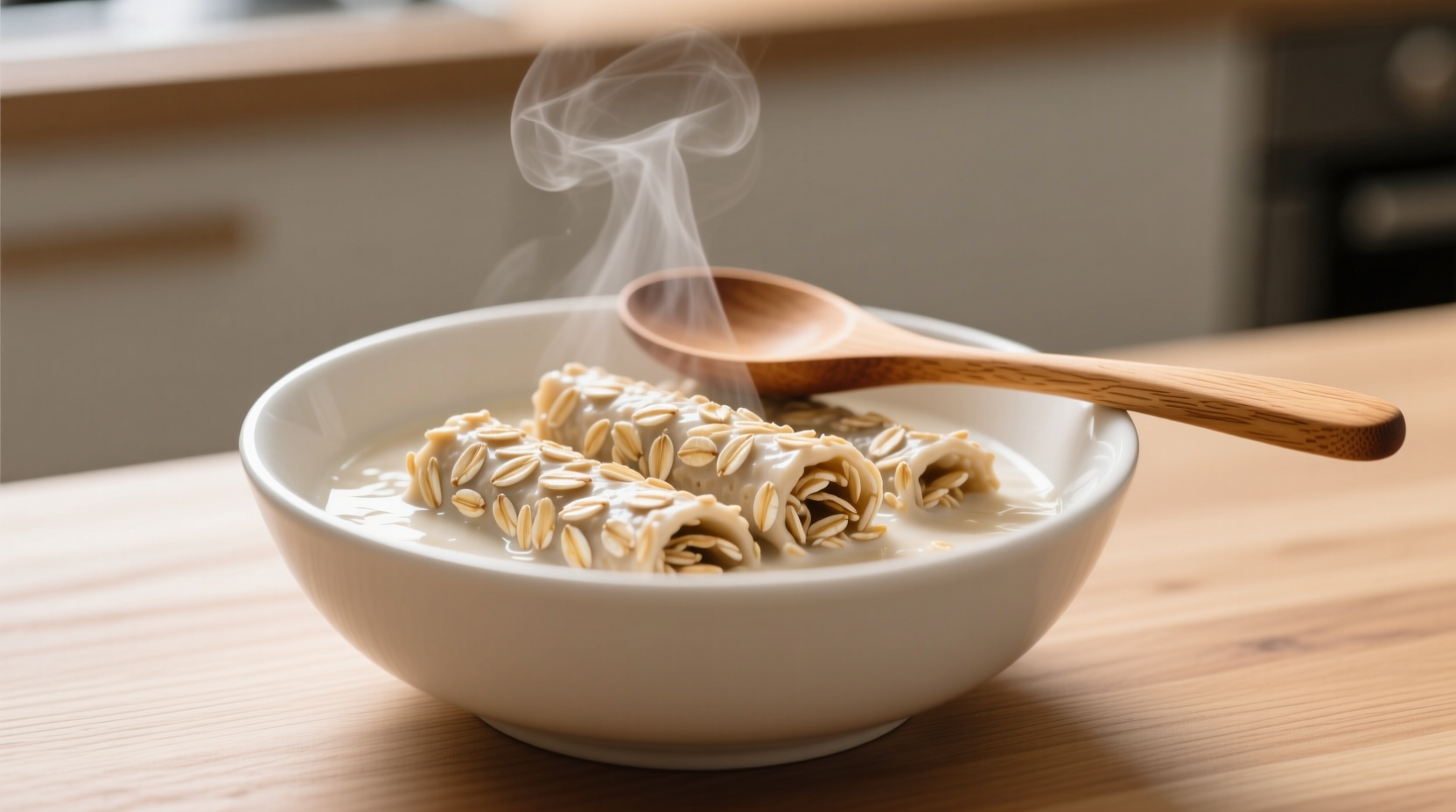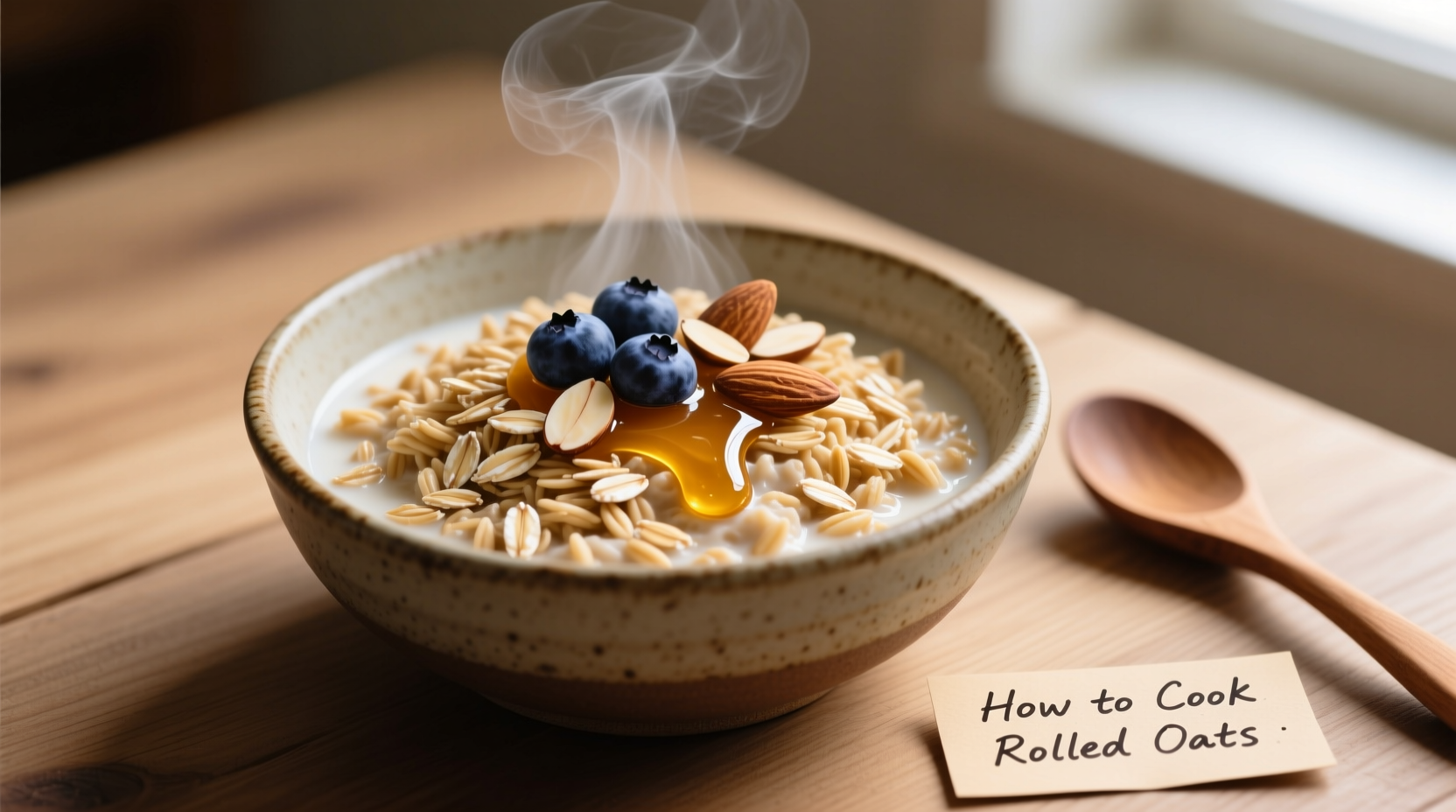For perfect rolled oats oatmeal, use a 2:1 water-to-oats ratio (1 cup oats to 2 cups liquid), simmer for 5-7 minutes while stirring occasionally, then let rest for 2 minutes. This creates creamy, non-mushy oatmeal every time.
Rolling out of bed and craving a warm, nutritious breakfast? You're not alone. Rolled oats oatmeal remains one of the most popular morning meals worldwide, with over 60% of American households keeping oats in their pantries according to USDA food availability data. But getting that ideal creamy-yet-textured consistency can be surprisingly tricky if you don't know the proper technique.
Why Your Rolled Oats Deserve Proper Attention
Unlike instant oats that sacrifice texture for speed, rolled oats (also called old-fashioned oats) maintain their structure during cooking, delivering that satisfying chewy bite and nutty flavor that makes oatmeal worth eating. The difference between gluey disappointment and breakfast perfection comes down to understanding the simple science behind cooking these whole grain treasures.
Your Step-by-Step Rolled Oats Cooking Guide
What You'll Need for Perfect Oatmeal
- 1 cup (80g) rolled oats
- 2 cups (475ml) water or milk (or combination)
- Pinch of salt
- Small saucepan with lid
- Wooden spoon
Stovetop Method: The Gold Standard
- Measure precisely - Use a kitchen scale for accuracy as cup measurements can vary by up to 20% depending on how tightly you pack oats
- Bring liquid to gentle simmer - In your saucepan, heat water or milk with salt until small bubbles form around the edges (180-190°F)
- Add oats gradually - Stir in oats slowly while continuing to stir to prevent clumping
- Reduce heat immediately - Lower to medium-low (about 3 on most stoves) to maintain a gentle simmer
- Cook for 5-7 minutes - Stir occasionally but not constantly (every 60-90 seconds) to allow proper starch release
- Rest covered - Remove from heat, cover, and let stand for 2 minutes for ideal texture

Common Cooking Mistakes That Ruin Oatmeal
| Mistake | Result | Solution |
|---|---|---|
| Boiling too vigorously | Mushy, gluey texture | Maintain gentle simmer, not rolling boil |
| Incorrect liquid ratio | Too watery or too thick | Stick to 2:1 liquid-to-oats ratio |
| Adding oats to cold liquid | Chalky texture, uneven cooking | Always add to already simmering liquid |
| Over-stirring | Excessive starch release, slimy texture | Stir only every 60-90 seconds |
Alternative Cooking Methods That Actually Work
Overnight Method (No Cooking Required)
Combine 1 cup rolled oats with 1½ cups liquid and ¼ teaspoon salt in a jar. Seal and refrigerate for 6-8 hours. The oats will soften through hydration alone, creating a creamy texture without heat. This method preserves more of the oats' natural enzymes according to research from the Culinary Institute of America.
Perfect Microwave Technique
Combine oats and cold liquid in a large microwave-safe bowl (triple the size of contents to prevent boil-overs). Microwave on 70% power for 3 minutes, stir, then microwave another 2-3 minutes until thickened. Let rest covered for 2 minutes. The key is using lower power to prevent explosive boiling while allowing proper starch development.
Flavor Boosters That Transform Basic Oatmeal
Timing matters when adding extras. Follow this sequence for maximum flavor impact:
- During cooking: Add a cinnamon stick or pinch of salt to the cooking liquid
- When removing from heat: Stir in 1 tablespoon butter or coconut oil for creaminess
- After resting: Fold in fresh fruit, nuts, or seeds to maintain their texture
- Just before serving: Drizzle with maple syrup or honey
Storage and Reheating Without Ruining Texture
Cooked oatmeal keeps well for 4-5 days in the refrigerator according to FDA food safety guidelines. When reheating:
- Add 1-2 tablespoons liquid per serving before reheating
- Use low power in microwave (50%) or gentle heat on stove
- Stir frequently during reheating to prevent separation
- Add fresh toppings after reheating for best texture
Why Rolled Oats Are Nutritionally Superior
According to USDA nutritional data, rolled oats retain more fiber and nutrients compared to instant varieties. A single cup of cooked rolled oats provides:
- 4 grams of dietary fiber (16% of daily value)
- 6 grams of plant-based protein
- Significant amounts of manganese, phosphorus, and magnesium
- Slow-release carbohydrates for sustained energy
Troubleshooting Your Oatmeal Texture
Rescue imperfect oatmeal with these quick fixes:
- Too thick? Add hot liquid 1 tablespoon at a time while stirring
- Too thin? Return to low heat and cook 1-2 minutes while stirring
- Burnt bottom? Immediately transfer to clean bowl, leaving burnt layer behind
- Bland flavor? Stir in pinch of salt or dash of vanilla extract
Putting It All Together: Your Perfect Oatmeal Routine
Mastering rolled oats cooking follows a simple sequence whether you're making breakfast for one or feeding a family. Start with proper ratios, maintain gentle heat, respect the resting time, and add enhancements at the right moment. Within a week of following these guidelines, you'll develop the intuition to adjust based on your stove, your oats, and your personal texture preference.











 浙公网安备
33010002000092号
浙公网安备
33010002000092号 浙B2-20120091-4
浙B2-20120091-4